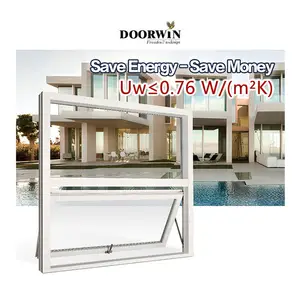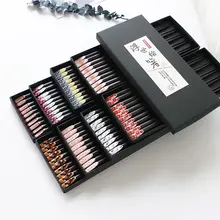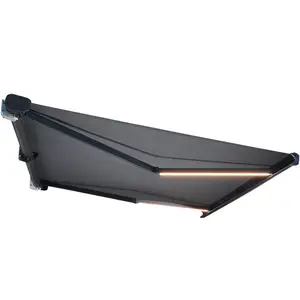The window awning is a practical and stylish addition to any home or building. Designed to provide shade and protection from the elements, this architectural feature is crafted from durable materials that withstand the test of time. Its purpose is to block the sun's harsh rays, preventing excessive heat from entering the interior while maintaining a comfortable ambiance. The window awning's sleek design seamlessly blends with the overall aesthetic of the structure, enhancing its curb appeal. This functional element also offers privacy, shielding the interior from prying eyes without compromising natural light. With its versatility and functionality, the window awning is an indispensable component that adds beauty and practicality to any architectural design.
Types of window awnings
Window awnings come in various types, with metal and aluminum being popular choices. Metal awnings are sturdy and durable, often made from steel or iron. They provide excellent protection against the elements, including rain, snow, and harsh sunlight. Metal awnings are known for their strength and longevity, making them suitable for residential and commercial applications. On the other hand, aluminum awnings are lightweight and corrosion-resistant, making them a practical option for coastal areas or places with high humidity. These awnings offer a sleek and modern look, enhancing the aesthetics of any building. Whether a metal awning or an aluminum one, both types provide shade. Window awnings decrease energy expenses and bring a stylish touch to any window.
Features of window awnings
The window awning boasts many impressive features that make it a desirable addition to any building. Crafted with durability in mind, this architectural element is designed to withstand the test of time. Its primary function is to provide shade and protection from the elements, shielding the interior from the sun's harsh rays and inclement weather. Additionally, the window awning, also known as a window canopy, adds a touch of elegance and style to the overall aesthetic of the structure. Its sleek design seamlessly integrates with the building's architecture, enhancing its curb appeal. With its versatile nature, the window awning offers privacy while allowing natural light to filter, creating a comfortable and inviting indoor atmosphere. Overall, the window awning is a practical and aesthetically pleasing feature that combines functionality and beauty effortlessly.
Why do people put awnings over windows?
House awnings are a popular addition to windows due to their numerous benefits. These awnings protect the windows from the elements, shielding them from direct sunlight, rain, and snow. By blocking out excessive sunlight, awnings help regulate the temperature inside the house, keeping it more relaxed during the hot summer months. Furthermore, they prevent harmful UV rays from entering, reducing the risk of fading and damaging furniture and decor. House awnings also add an aesthetic appeal to the exterior, enhancing the overall look of the building. They come in various designs and colors, allowing homeowners to personalize their homes while adding a touch of elegance. Additionally, awnings offer privacy by limiting the view from the outside. They also act as a barrier, preventing rainwater from seeping into the house through open windows during storms.









































 浙公网安备 33010002000092号
浙公网安备 33010002000092号 浙B2-20120091-4
浙B2-20120091-4